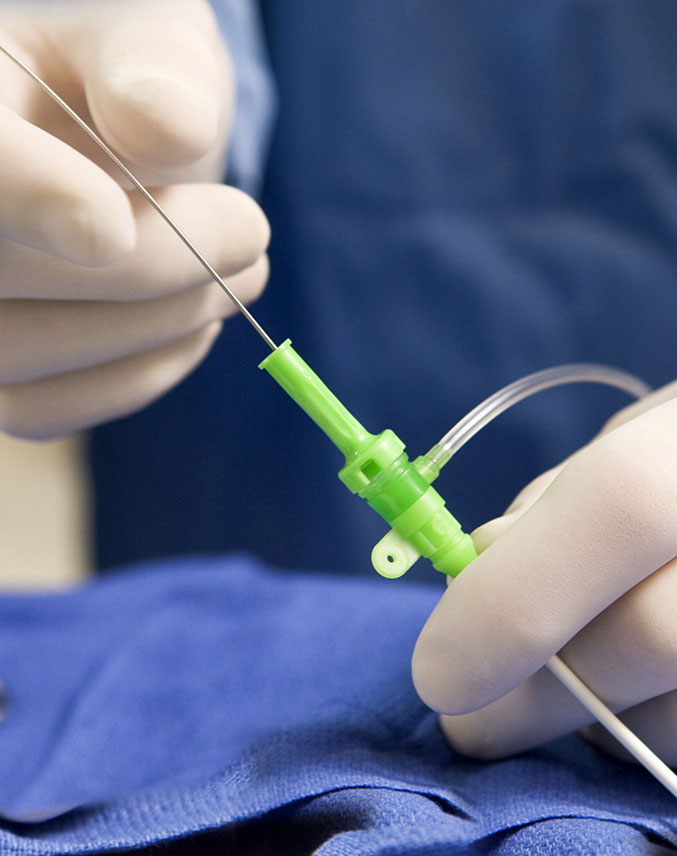What is Interventional Radiology?
Interventional radiology (IR) is a specialised field of high-tech medicine. IR doctors perform minimally invasive surgical procedures through small incisions in the body while using imaging techniques such as ultrasound, MRI, CT scan to guide them throughout. The range of conditions which can be treated by IR is extensive and continually expanding; from basic procedures such as taking a biopsy, treating tumours to complex life-saving interventions such as embolization of aneurysm. That is why today in most developed countries, many minimally invasive IR procedures have supplanted major surgical procedures.


Examples of IR Procedures & Techniques
Vascular Interventions:
• Angioplasty - repair or opening of narrowed /occluded blood vessels
• Thrombolysis – removal of blood clots blocking blood vessels to reinstate blood supply
• Embolisation – stop blood supply to halt bleeding or ongrowing mass
• Microwave Ablation – destroying tumor cells or vessels causing symptoms
• Vascular Access – placement of a long-term catheter to deliver medication/draw blood
Non-Vascular Interventions:
• Biopsy – removal of small tissues for diagnosis
• Drainage – fluid collection
• Percutaneaous Transhepatic Cholangiography (PTC) – evaluation of biliary tract + drainage
• Stenting – opening of narrowed structures to allow flow
What are the Benefits of IR Procedures?
• Minimized Risks
• No General Anesthesia (in most procedures)
• Shorter hospital stays
• Lower costs (less hospital stay, dressings, follow ups etc)
• Greater comfort, less pain
• Minimal to no scars
• Faster Recovery
• Quicker convalescence and return to usual activities and work.


What to Expect during an IR Procedure?
You will meet with the specialist to discuss your diagnosis, concerns and expectations. With honesty and an experienced medical approach, our doctor will provide you with a personalized treatment plan.
On the D-day, the doctor will use an imaging technique to get an optimum look at the part of your body he needs to treat and guide him throughout the procedure.
Most interventions are done under local anesthesia and do not require general Anesthesia. You may be given some sedation to relax you. The doctor will numb the skin where he will make a very small incision (3-5 mm) through which he will insert a needle/catheter (a fine tube) into your body and precisely maneuver through your blood vessels to reach the area that needs treatment. After that, the catheters/needles will be removed, and a small band aid applied.
You will be kept for observation for a couple hours at the clinic and should be back home on the same day. The doctor will advise you when you can return to your usual activities.
Above are the common steps in Interventional Radiology procedures. Nevertheless, management is based solely on your medical condition and situation.
What are The Risks of IR Procedures?
As with any medical procedures that you undergo, there are some risks like bleeding, infection, and other risks that may vary according to your specific IR procedure. However, IR procedures generally carry significantly lower risks than surgical procedures, while accomplishing similar or even better outcomes.
The use of radiation for diagnostic or therapeutic interventions, in the form of X-ray, CT Scan or fluoroscopy, etc is not without risk. IRs make it a priority to minimize the amount to radiation necessary to complete the treatment by following established federal guidelines.
It is good to know that most of our procedures are ultrasound guided, and there are no known risks associated with ultrasound.

